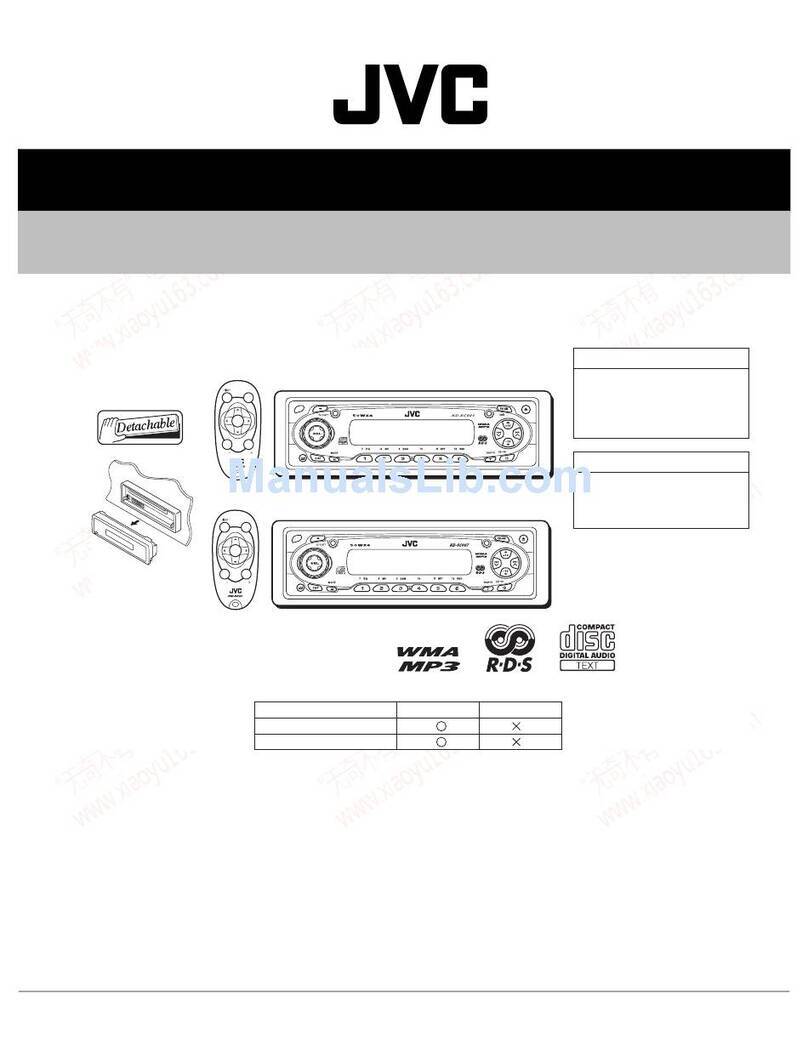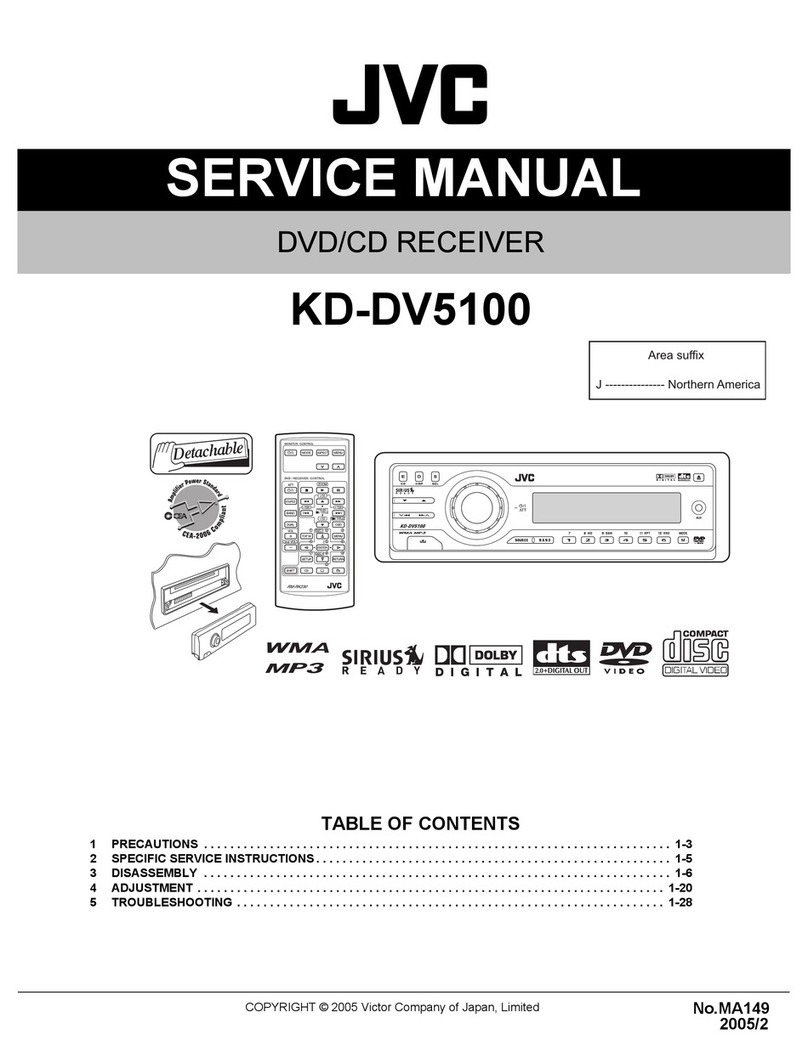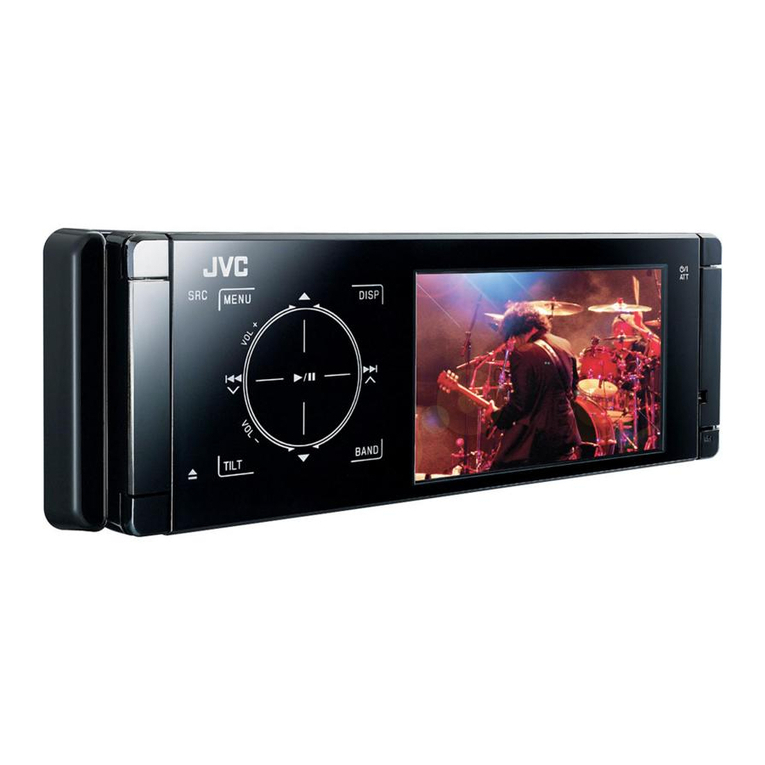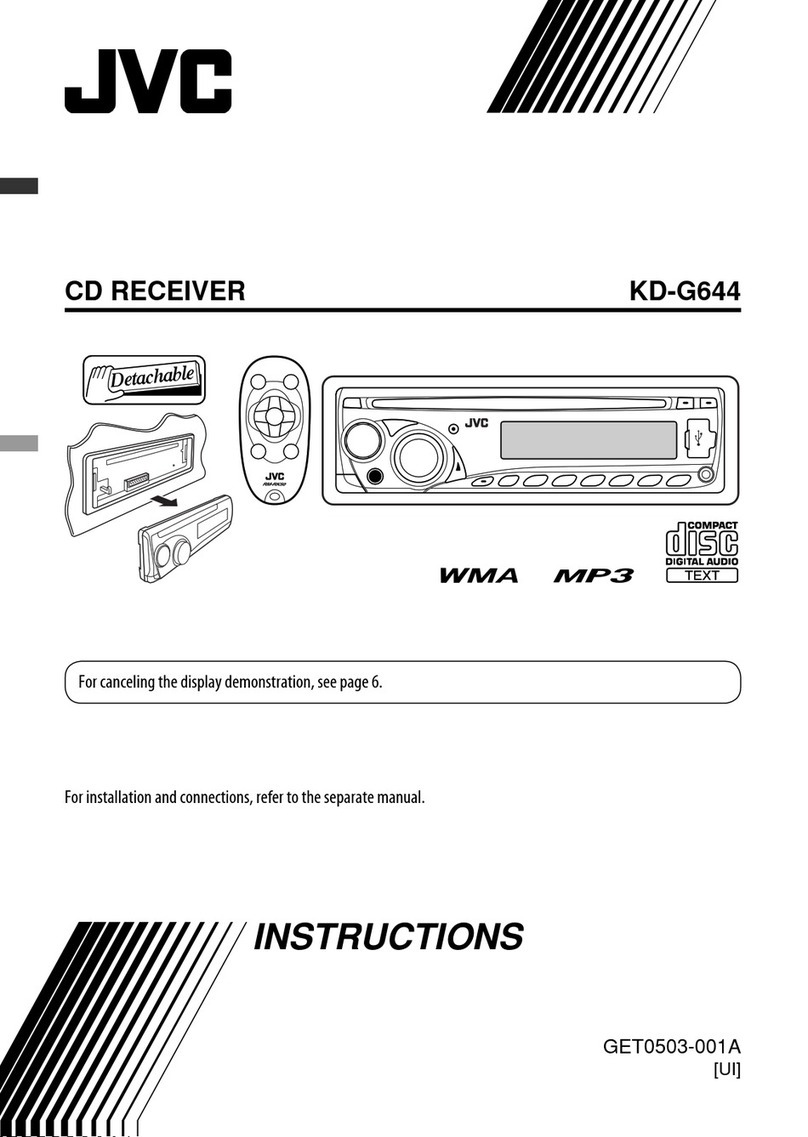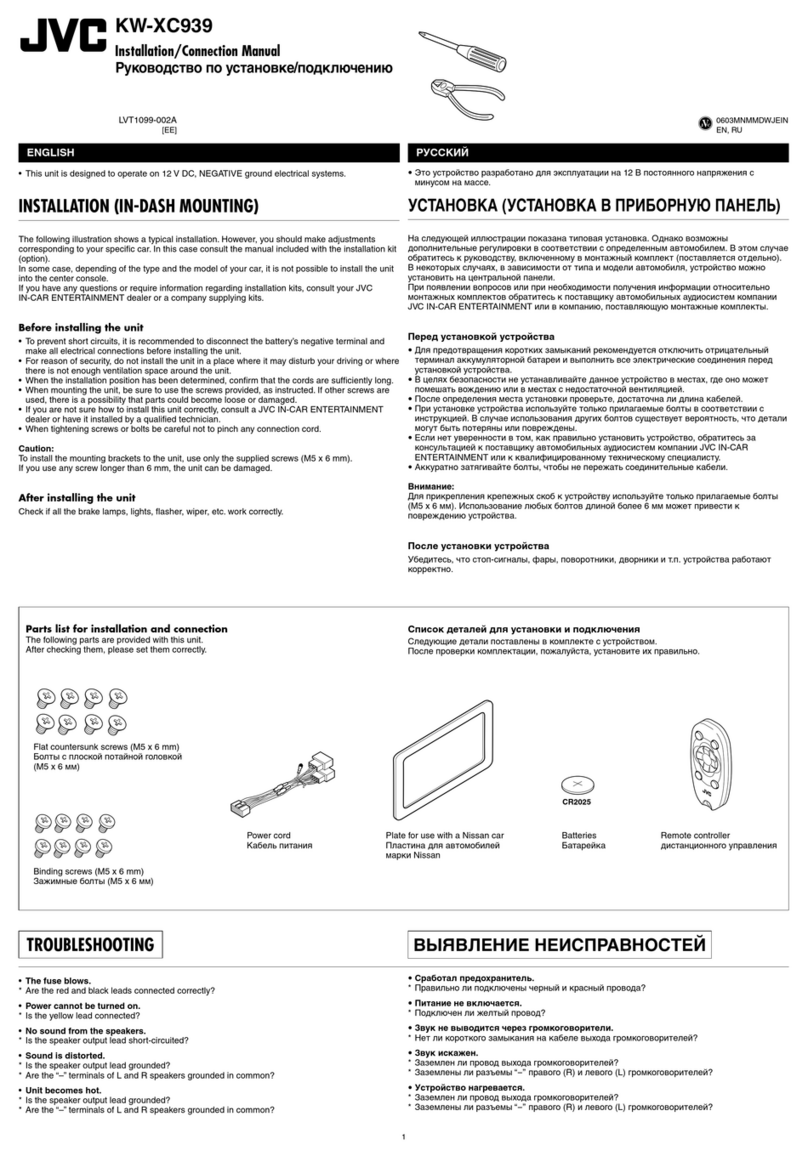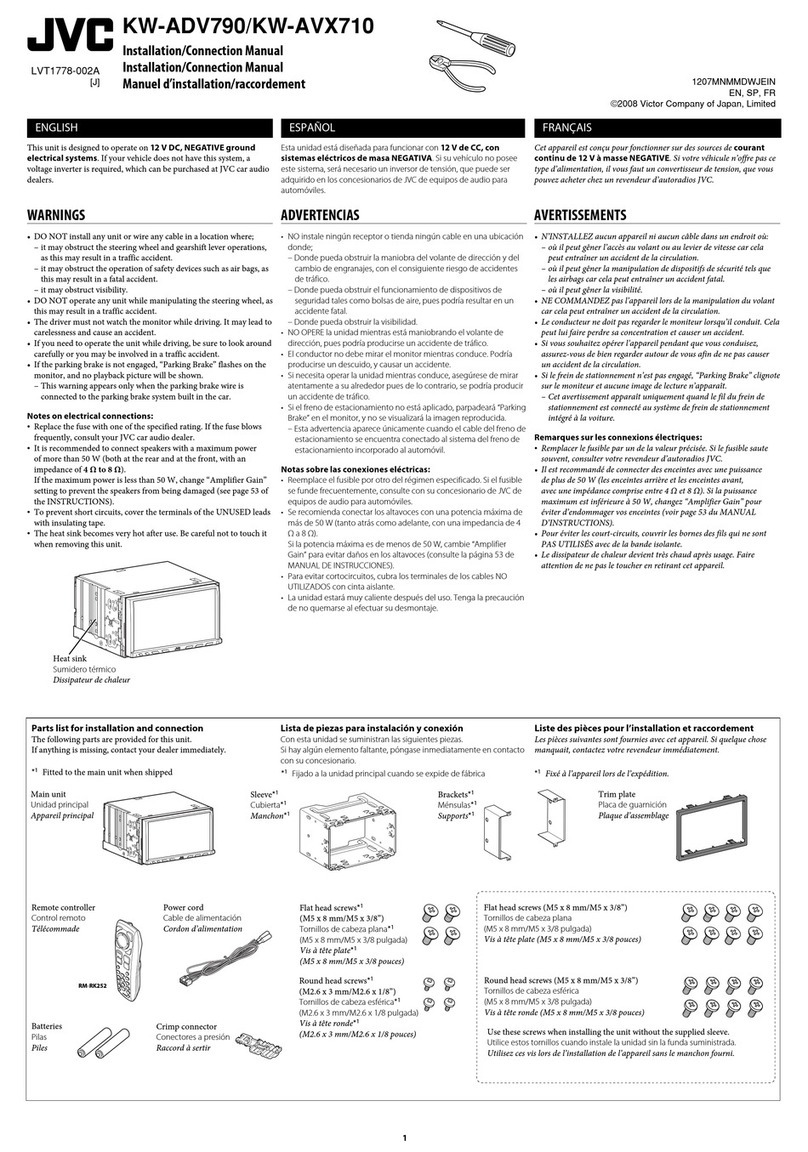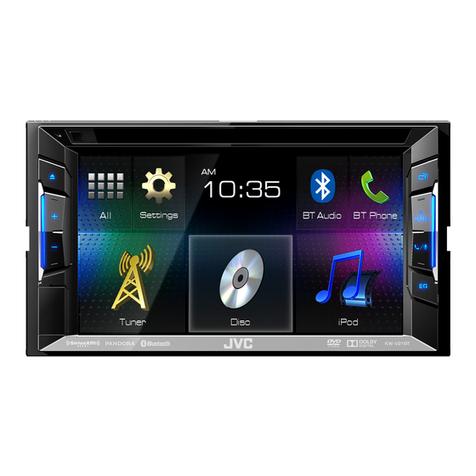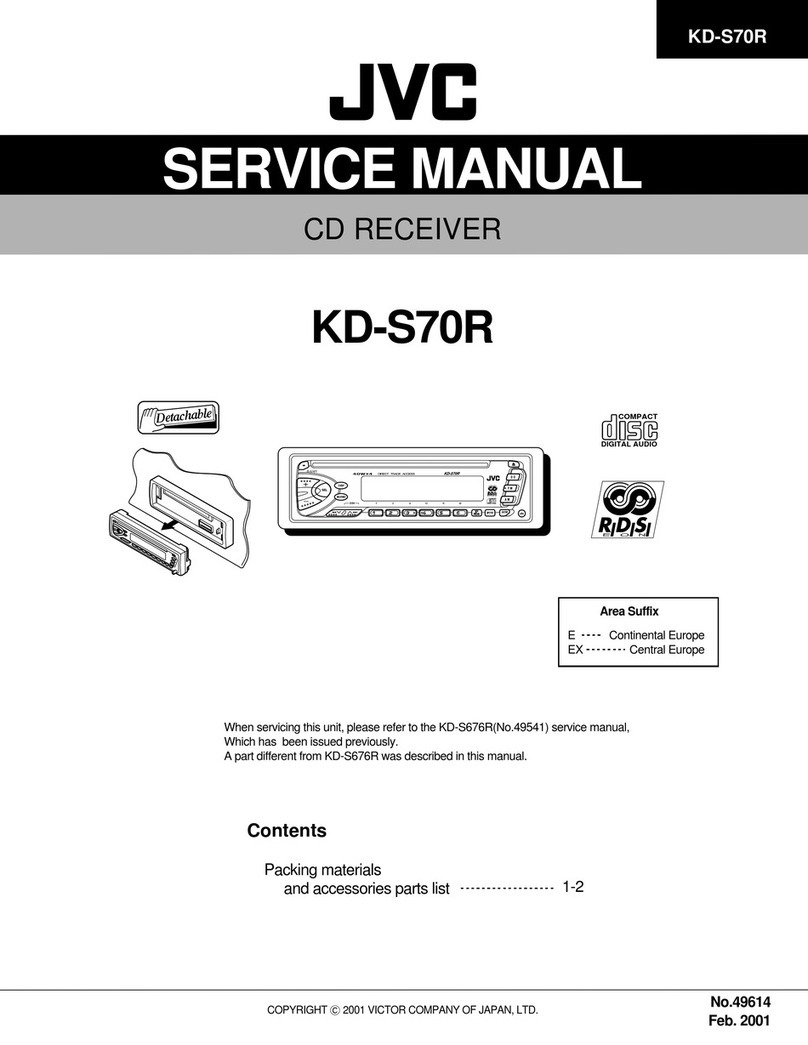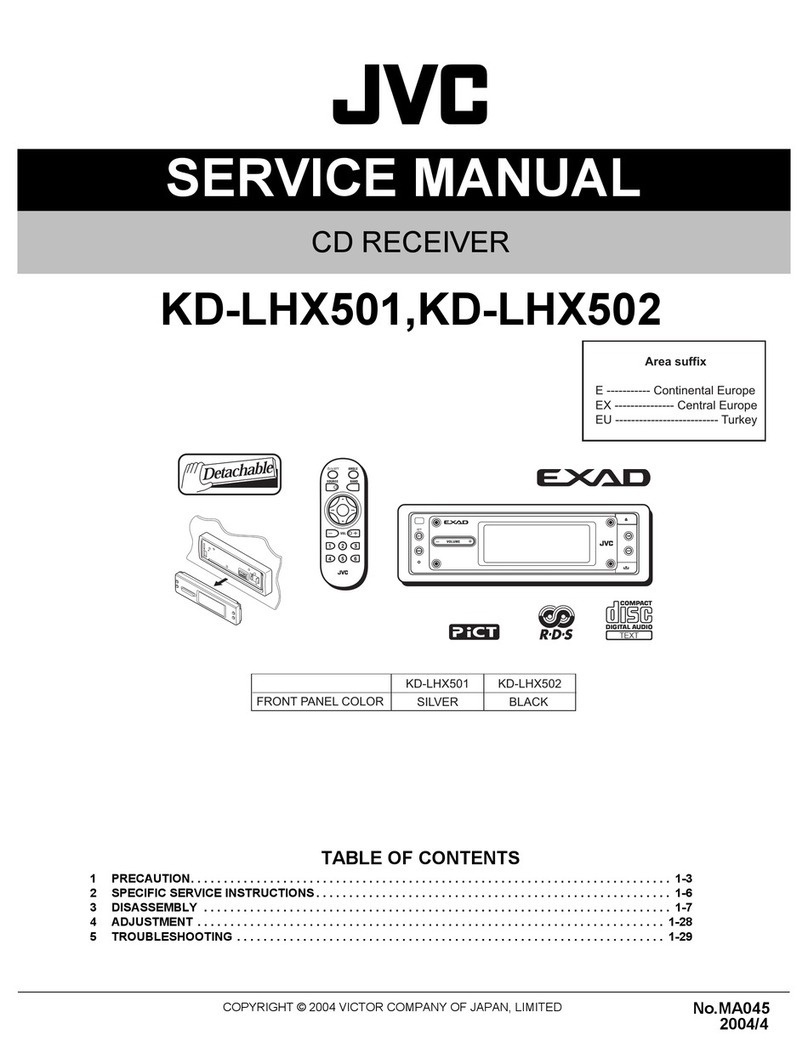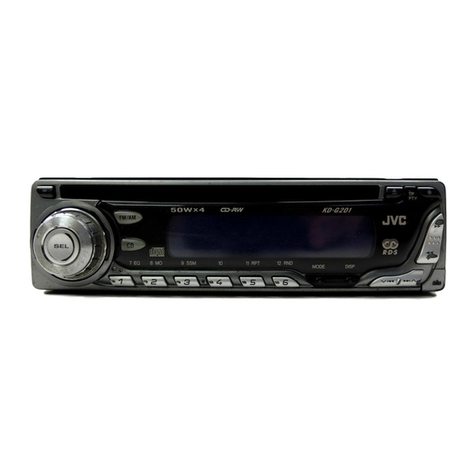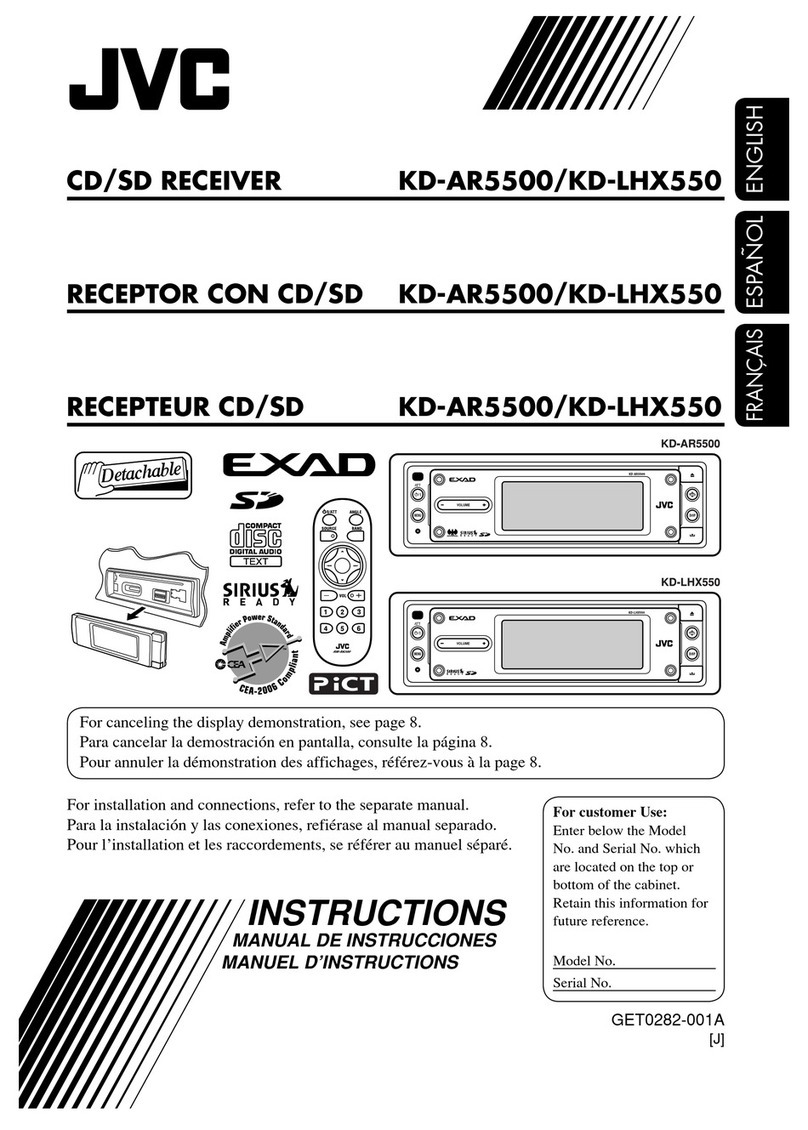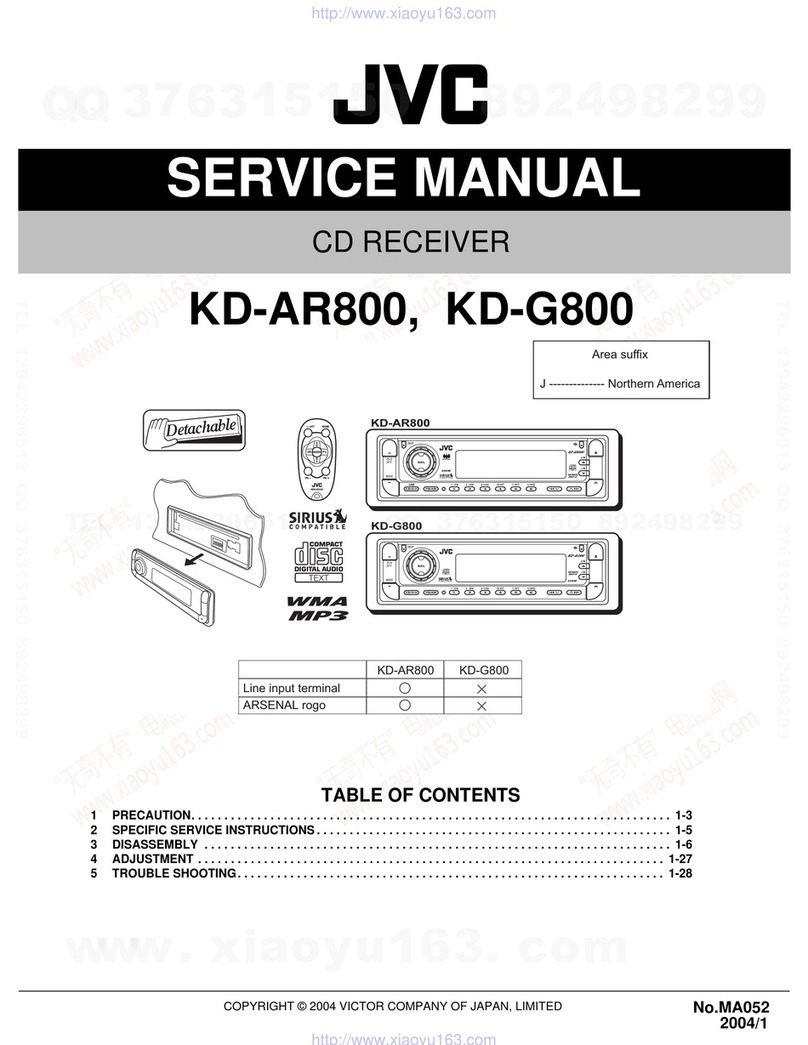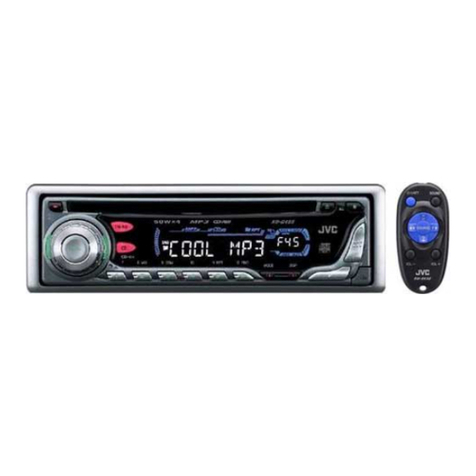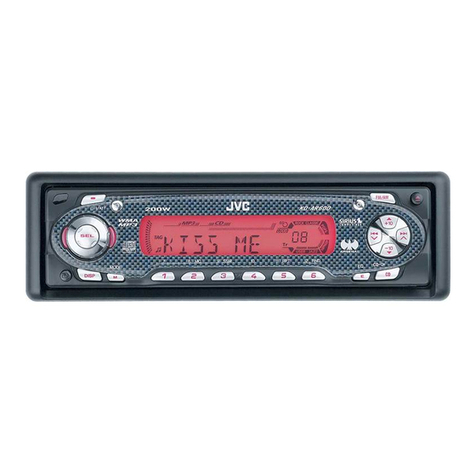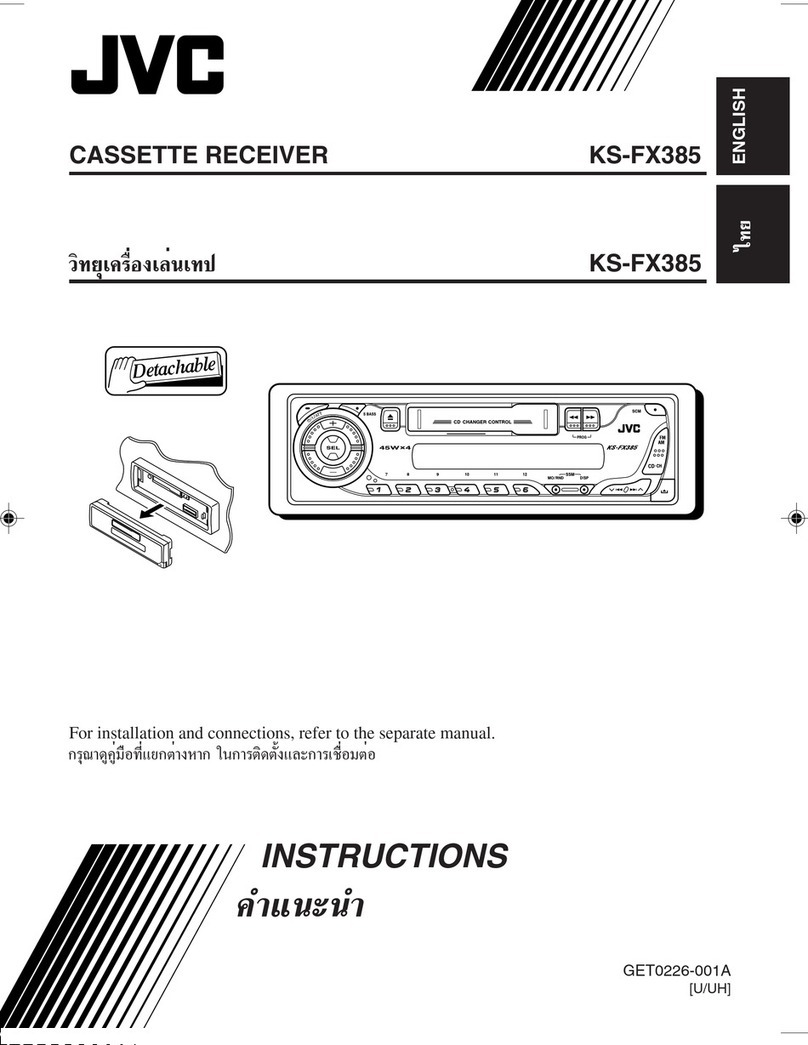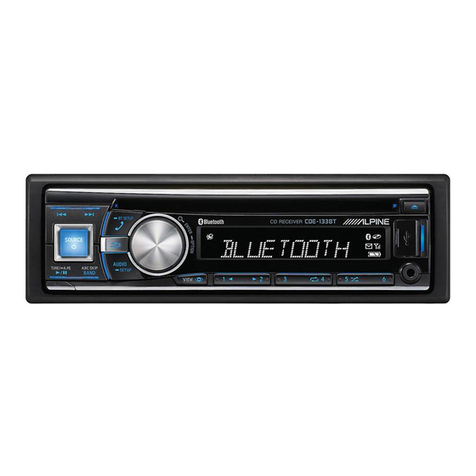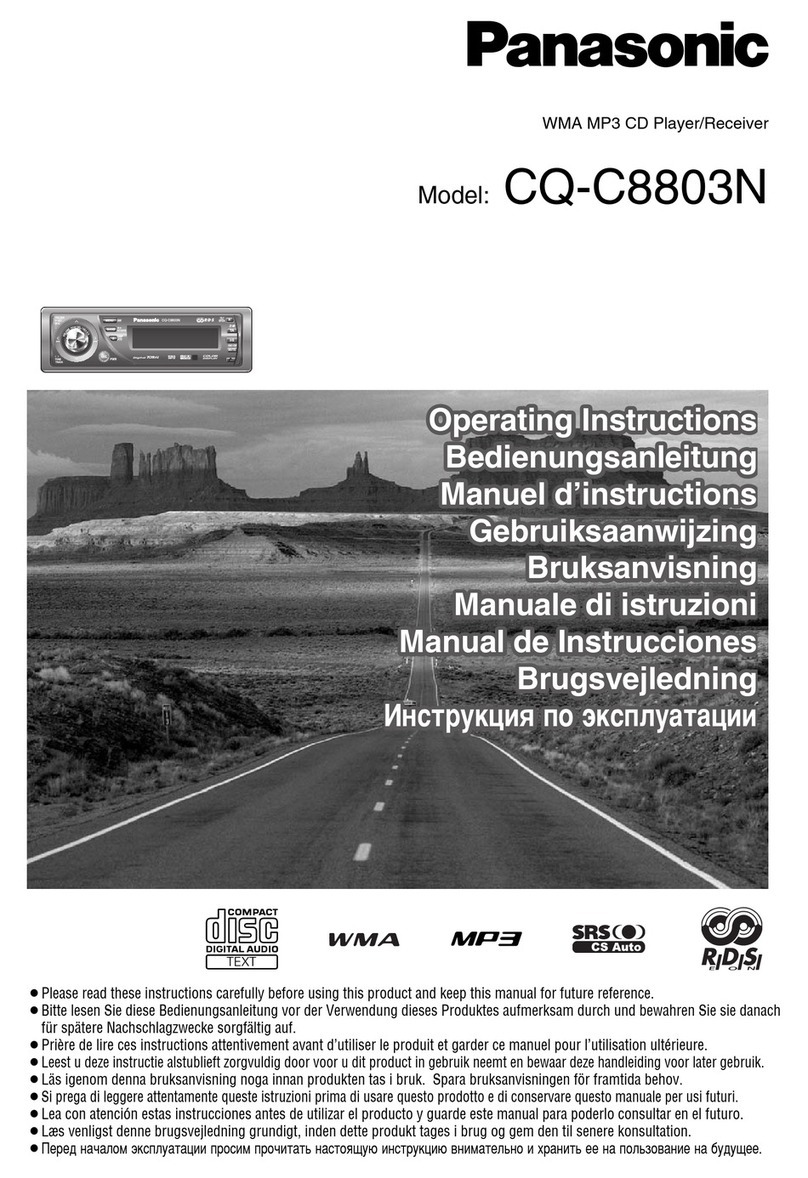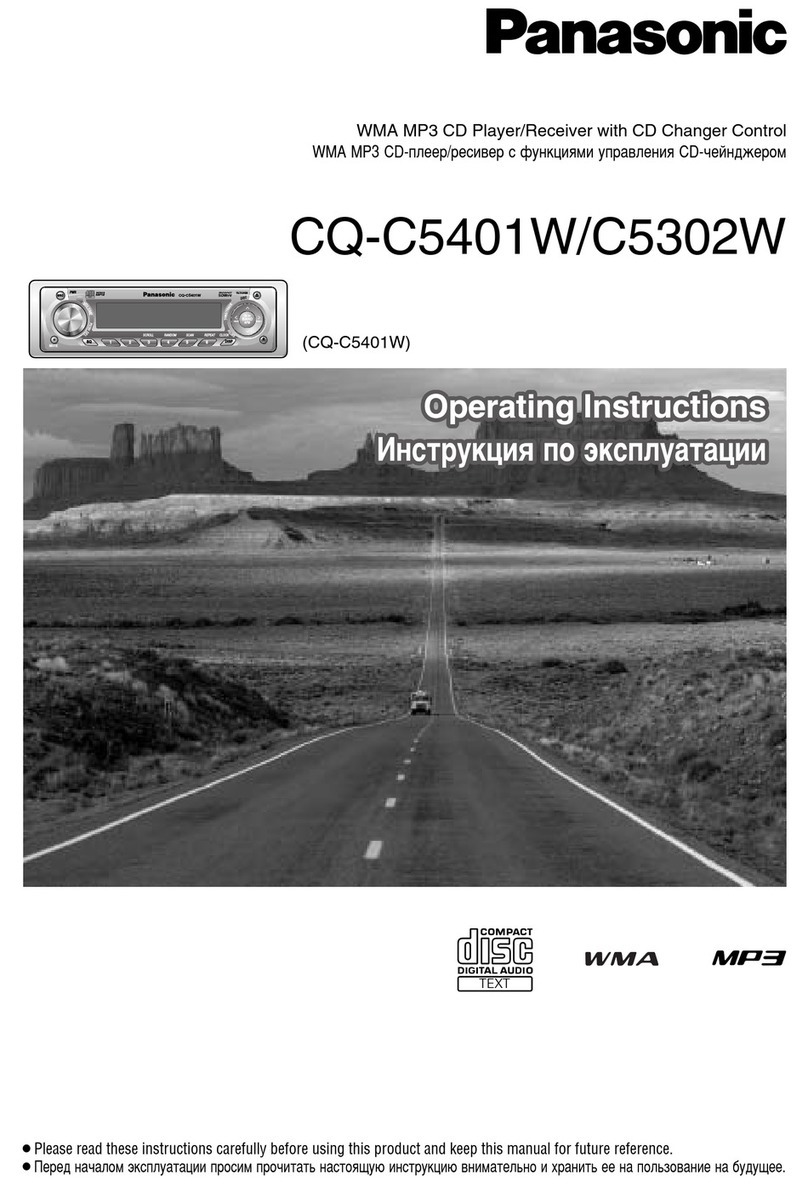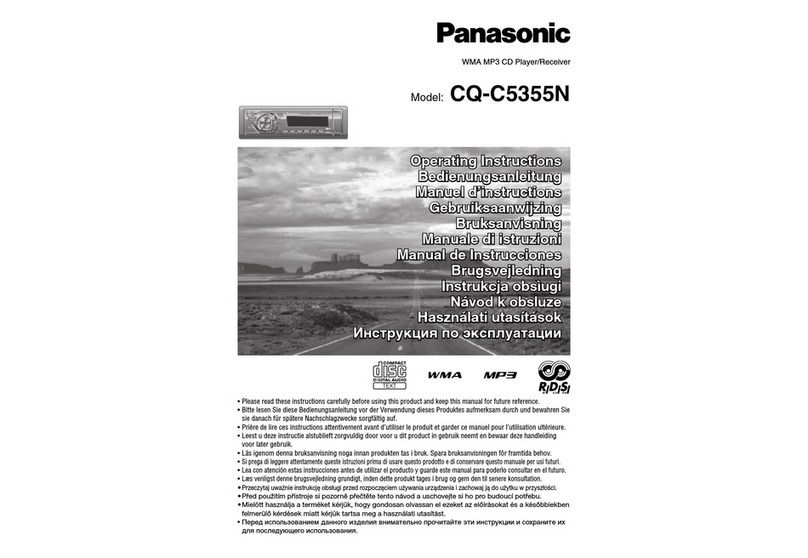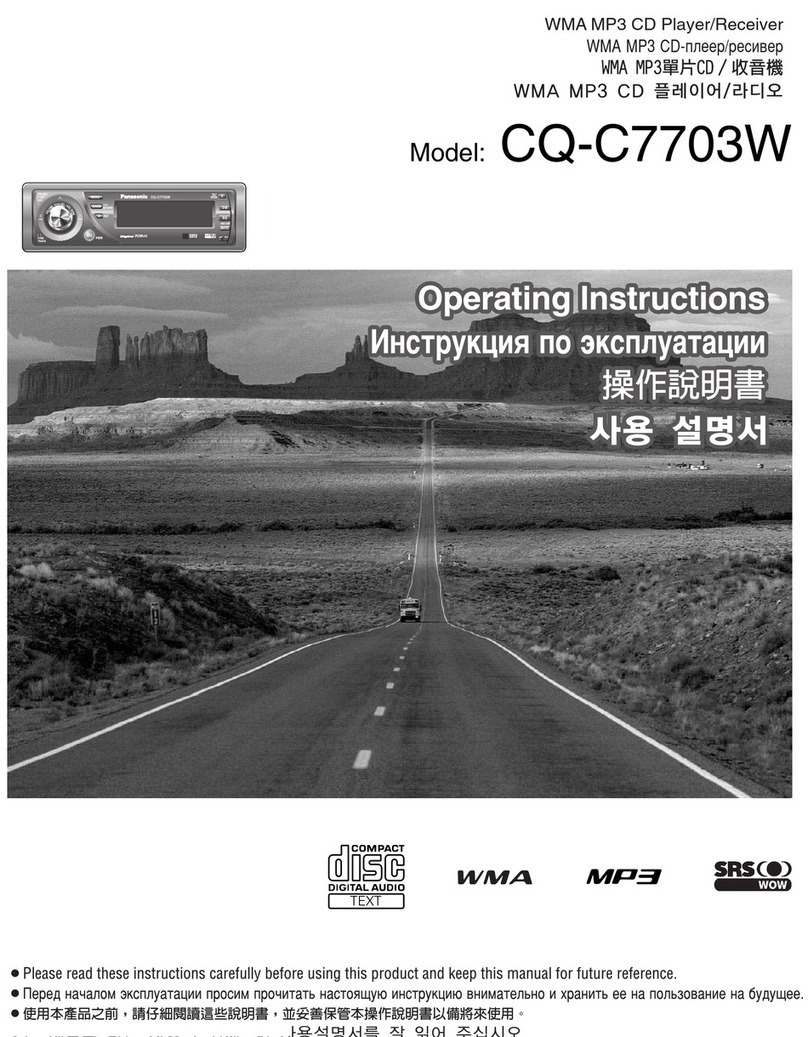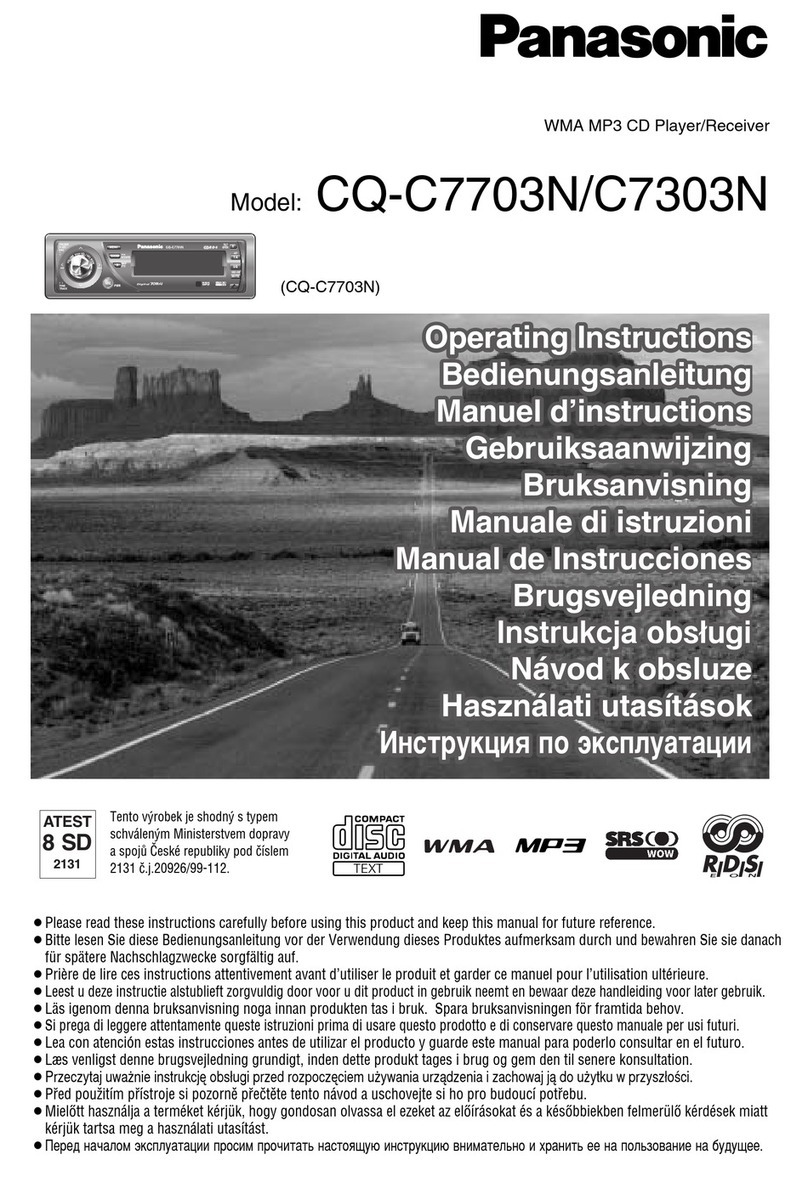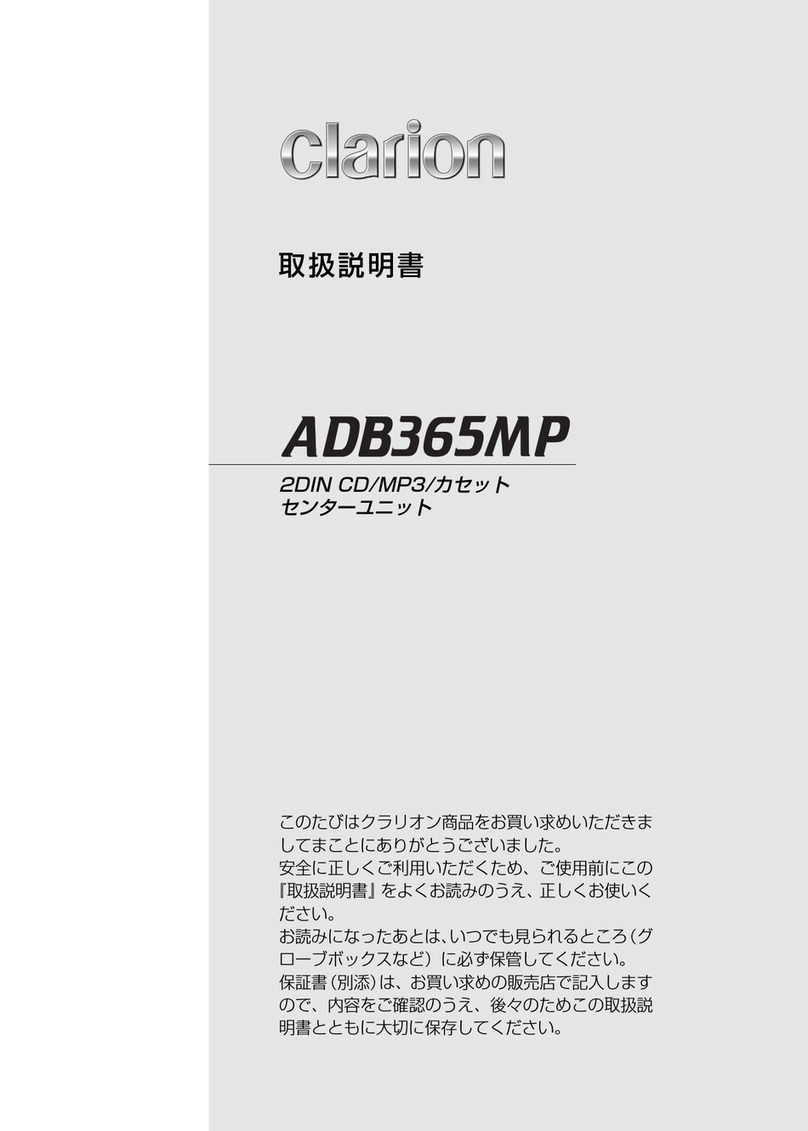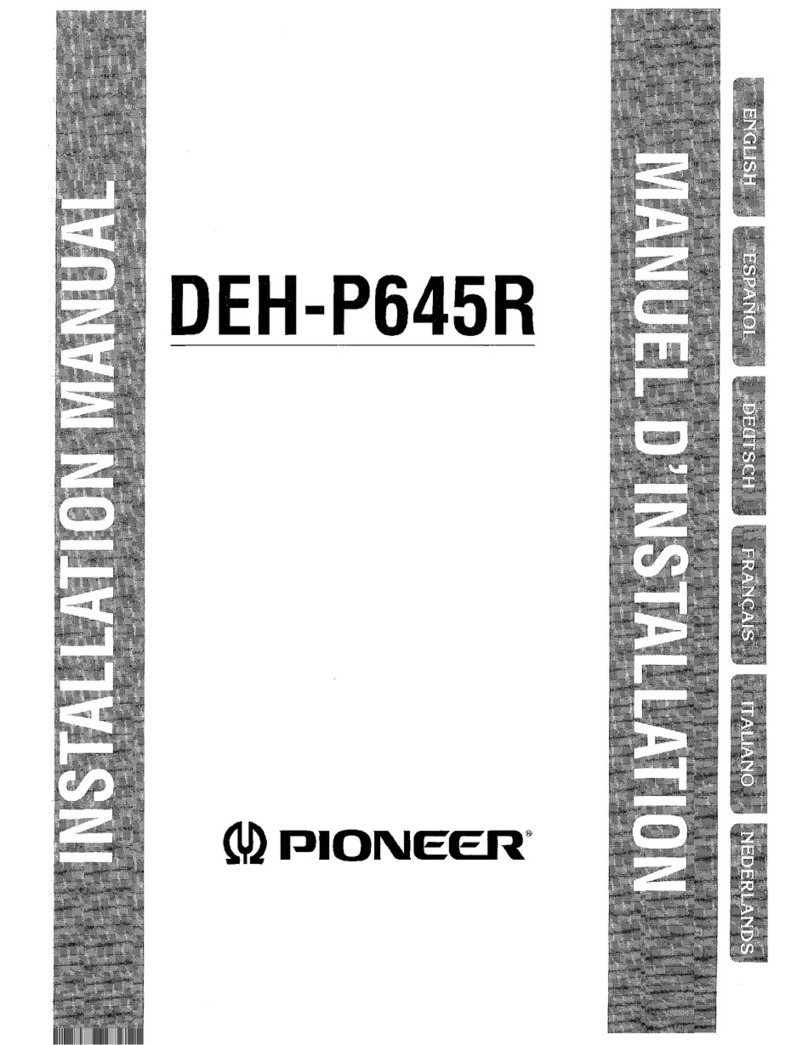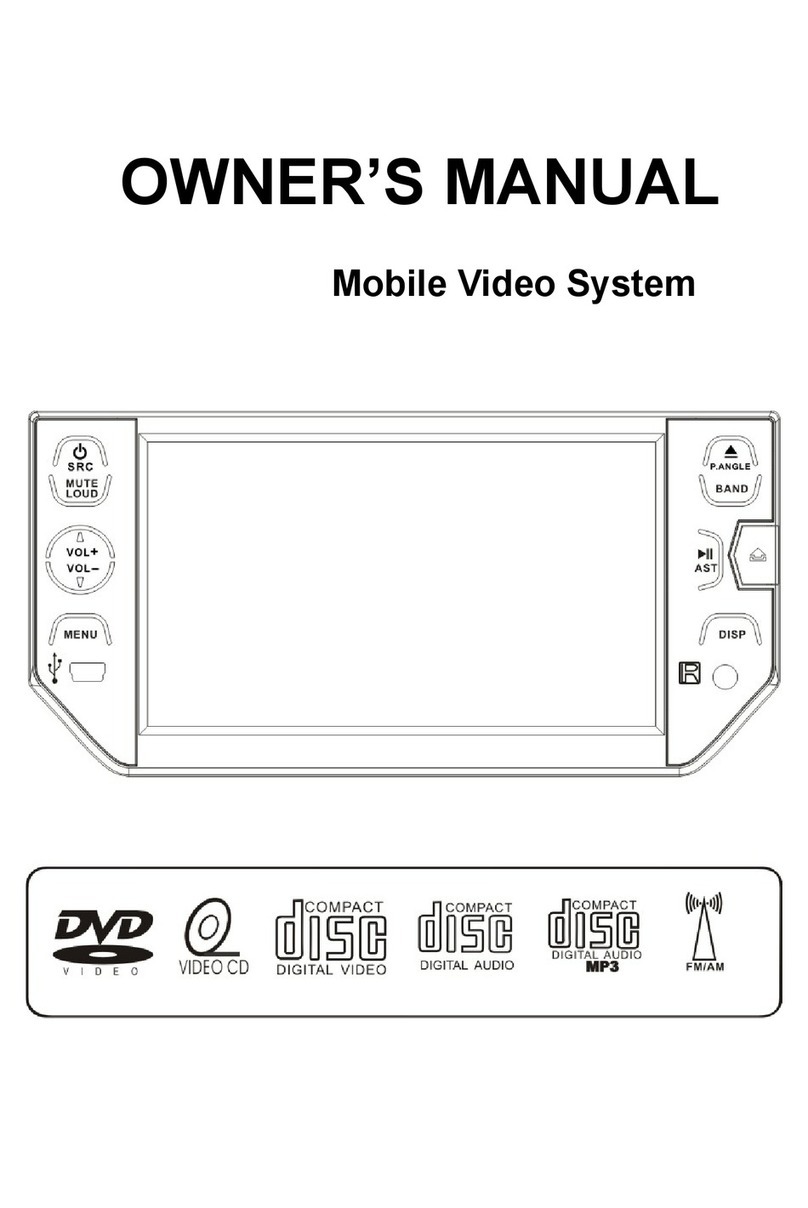
KS-FX230
1-4
<< Cassette mechanism section >>
1.
2.
3.
4.
Desolder the lead wires of the loading motor at the 2
positions shown (Red and Black).
Desolder the lead wire of the head at the 3 positions
shown (RED,Yellow and Black).
Remove the three screws Asecuring the head relay
board.
Shift the interlocking section asecuring the head
relay board in the direction shown by the arrow to
remove the board.
Removing the head relay board (see Fig.1)
Removing the load arm ass'y (see Fig.2)
Removing the cassette holder and arm
ass'y (see Fig.3)
Removing the sub chassis ass'y (see Fig.4)
1.
2.
3.
Shift the load arm ass'y counter clockwise.
Remove the load arm ass'y from the catch.
Using tweezers, detach the mylar washer 1securing
the load arm ass'y and pull out the load arm ass'y.
NOTE : When reassembling, be sure to use a new
mylar washer.
1.
2.
3.
4.
5.
Remove the head relay board.
Remove the load arm ass'y.
Apply DC 6V to the lead wire of the loading motor
ass'y and turn the load gear ass'y to the position
shown in Fig.3.
Remove the screw Bsecuring the cassette holder
and holder arm ass'y.
Shift the cassette holder and holder arm ass'y in the
direction shown by the arrow and remove them from
the interlocking section bof the sub chassis ass'y.
1.
2.
3.
4.
Remove the head relay board.
Remove the load arm ass'y.
Remove the cassette holder and holder arm ass'y.
Remove the two screw Cand Dsecuring the sub
chassis ass'y.
NOTE : When removing the sub chassis ass'y, the
mode gear may become detached. In this
case, set it back to the original position.
Red
Red
Black
Black Yellow Head relay board
Fig. 1
A
AA a
Catch
Load arm ass'y Fig. 2 1
Apply DC 6V
Fig. 3
Loading motor ass'y
Loading gear ass'y
Sub chassis ass'y
Cassette holder
Holder
CD
b
B
